NK Dinamo Zagreb
| Full name | Nogometni Klub Dinamo Zagreb | ||||||||||||||||||||||||||
|---|---|---|---|---|---|---|---|---|---|---|---|---|---|---|---|---|---|---|---|---|---|---|---|---|---|---|---|
| Nickname(s) | "Modri (The Blues)" | ||||||||||||||||||||||||||
| Founded | 9 June 1945 | ||||||||||||||||||||||||||
| Ground | Maksimir Stadium, Zagreb, Croatia (Capacity: 38,923) |
||||||||||||||||||||||||||
| Chairman | |||||||||||||||||||||||||||
| Manager | |||||||||||||||||||||||||||
| League | Prva HNL | ||||||||||||||||||||||||||
| 2007-08 | Prva HNL, Champions | ||||||||||||||||||||||||||
|
|||||||||||||||||||||||||||
Dinamo Zagreb is one of the most famous and successful Croatian football clubs. Dinamo is based in Zagreb, the capital city of Croatia. It is the most popular club in the country with between 33% and 36% of the population supporting it.[1][2]
Contents |
History
Origins
After the Second World War following the rise to power of the Communist Party of Yugoslavia, three very popular Zagreb football clubs (HAŠK, Građanski, Concordia) were disbanded overnight, and a municipal club was formed on June 9 1945. Like other football clubs outside Croatia in Eastern Europe, it was also called Dinamo ("Dynamo"), and all the best and prospective Građanski players immediately joined the newly formed club. The newly formed club played at the old stadium of HAŠK, while most of the players were from Građanski, a number of outstanding players were forced to join Partizan Belgrade (Stjepan Bobek, Miroslav Meho Brozović, Franjo Glaser and Florijan Matekalo)[3]. In fact, they were conscripted in Yugoslav People's Army since they did not participate actively in World War II. Florijan Matekalo was coach of FK Partizan and later lived and died in Serbia even after split up between Croatia and Yugoslavia. Franjo Glaser already played for the BSK Belgrade before the World War II. Only Miroslav Brozović, born in Herzegovina, claimed that he was forced to play for Partizan[4] although he himself wanted to move to BSK Belgrade before the World War II. It is often incorrectly associated with HAŠK (Hrvatski akademski športski klub, Translated: Croatian Academic Sports Club), formed on November 6 1903 as a students' club.
Márton Bukovi, the former Građanski manager, continued to work at Dinamo together with masseur Franjo Žlof, also a former Građanski player. Of the HAŠK players that transferred to Dinamo, the regulars in the first team were Ratko Kacian, Željko Čajkovski, Svetozar Peričić and Dragutin Lojen. Only Čajkovski remained in Maksimir for a longer period, for a total 11 years. The newly formed club also took Građanski's blue colours and from 1969onwards, the club's emblem was very similar to of Građanski's.
1990s
The club controversially changed its name to HAŠK-Građanski in 1992, and another name change followed in 1993, when the club was renamed to Croatia Zagreb. The name change was widely seen as a political move by the leadership of then newly independent Croatia, with the goal of distancing the entire country from its Communist past. As the name change was also never accepted by its fans, on February 14, 2000 the club changed back its name to Dinamo.
In the late 1990s, the club played two consecutive seasons in the UEFA Champions League group stage. In the 1998-99 season, they were drawn to a group with Ajax Amsterdam, Olympiacos and FC Porto. After disappointing performances in the first three matches in which they managed one draw against Ajax at home and lost their away matches against Olympiacos and Porto, they performed well in the remaining three matches, beating Porto at home and Ajax away, and drawing to Olympiacos at home. However, they failed to advance to the quarterfinals with a second-place finish behind Olympiacos. In the 1999-2000 season, they were in a group with defending champions Manchester United, Olympique de Marseille and Sturm Graz, but managed only a fourth-place finish in the group with two draws and one win. They most notably held Manchester United to a goalless draw at Old Trafford in their opening Champions League match that season.
2000 onward
They subsequently participated four times in the third qualifying round for the Champions League, in 2000, 2003, 2006 and 2007. However, they played against AC Milan, Dynamo Kyiv, Arsenal FC and most recently Werder Bremen and failed to win a single match, losing 6-1 on aggregate to AC Milan, 5-1 on aggregate to Dynamo Kiev and Arsenal and 5-3 on aggregate to Werder Bremen. Throughout the first half of the 2000s decade, they had some international success in the UEFA Cup as they advanced to the second round of the competition three times and also played in the group stage of the competition in the 2004-05 season, but were unlucky not to progress to the next round after, leading 2-0, conceding two late goals in their last game against SC Heerenveen in a group which was also comprised of VfB Stuttgart, SL Benfica and KSK Beveren behind. Dinamo's best UEFA Cup result since the Croatian independence was in the 1997-98 season, when they advanced to the third round and were eliminated with a narrow 2-1 defeat to Atlético Madrid on aggregate.
Their UEFA Cup appearance in the 2006-07 season of the competition ended in the first round with a 5-2 defeat to Auxerre on aggregate. They were, however, more successful in the following season of the competition in 2007-08, reaching the group stage after knocking out Ajax in the first round. After losing 1-0 at home, Dinamo went on to beat the Dutch giants 3-2 in extra time of the second leg in Amsterdam. They failed to advance through the group stage in competition with Basel, Brann, Hamburger SV and Rennes, recording two draws and two defeats.
The club were to participate in the UEFA Cup again during the 2008-09 season, and were drawn in Group D alongside NEC, Spartak Moscow, Tottenham Hotspur and Udinese. Dinamo went on to win their opening Group D game 3-2 at home to NEC. Fortunes changed in their 2nd Group D game away to Tottenham Hotspur with Dinamo losing 4-0. Darren Bent scored a hat-trick.
Team honours
National honours
- Croatian Champions: 10
-
- 1992-93, 1995-96, 1996-97, 1997-98, 1998-99, 1999-00, 2002-03, 2005-06, 2006-07, 2007-08
- Yugoslav Champions: 4
-
- 1947-48, 1953-54, 1957-58, 1981-82
- Croatian Cup: 9
-
- 1994, 1996, 1997, 1998, 2001, 2002, 2004, 2007, 2008
- Yugoslav Cup: 7
-
- 1951, 1960, 1963, 1965, 1969, 1980, 1983
- Croatian Supercup: 8
-
- 1996, 1997, 1998, 2002, 2003, 2006, 2007, 2008
International honours
- Inter-Cities Fairs Cup (Today's UEFA Cup): 1
-
- Winners 1966-67
- Runners-up 1962-63
- Balkans Cup: 1
-
- 1976
Stadium
Dinamo's home ground is Maksimir Stadium, which is situated in the northeast borough of the city of Zagreb (called Maksimir) next to the famous Maksimir Park (forest) and the Zagreb Zoo. The stadium's current capacity is 38,923 and it's set to be rebuilt and renovated from 2008.
Supporters
Although Dinamo has had a large army of followers throughout its history, its first organized group of followers emerged in 1986. The most hardcore and faithful followers, formed the Bad Blue Boys. As legend has it, the name was inspired by the then very popular 1983 film Bad Boys starring Sean Penn.
Throughout the Zagreb boroughs, BBB chapters emerged, and at the matches one could see banners from various parts of the city (like Maksimir, Tresnjevka, and Dubrava). At first, the supporters privately organized visits to the games in former Yugoslavia. They were present at Dinamo's matches in Belgrade, Sarajevo, Ljubljana, Niš, Podgorica, Split and Skopje.
At the start of the 1990s, the first organized BBB Fan Club was established and quickly became popular.
Dinamo youth school - ONS Hitrec - Kacijan
Dinamo's football school Hitrec - Kacijan is named after two football greats from Zagreb.
Ico Hitrec, centre-forward from HAŠK is widely considered to be the greatest Croatian player before World War II. He became a legend after scoring twice against then famous Spanish keeper Ricardo Zamora during the first night game in the capital of Croatia between Selection of Zagreb and Real Madrid in 1931. As on of the first Croatian international players, he went on to play for Grasshopper-Club Zürich of Switzerland, and Kicker, at the time the foremost sports journal in Europe, chose him as a member of the European elite 11. He was also the first technical officer and in his office in Zagreb power-works in Gundulićeva Street, the best players from Građanski met and discussed forming a new club with blue shirts.
Ratko Kacijan played with Hitrec and won the title with HAŠK in 1938. Ten years later, he was a member of the team that won Dinamo its first Championship title.
The current director of the school is Romeo Jozak.
Current squad
As of September 1, 2008
|
|
Notable former players
Croatian
|
|
|
Others
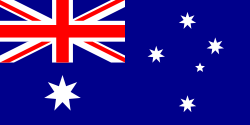 Eddie Krnčević
Eddie Krnčević Mark Viduka
Mark Viduka Eddy Bosnar
Eddy Bosnar
 Branko Strupar
Branko Strupar Jens Nowotny
Jens Nowotny Georg Koch
Georg Koch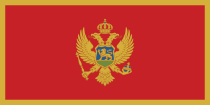 Željko Petrović
Željko Petrović Hernán Medford
Hernán Medford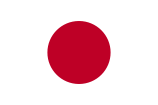 Kazuyoshi Miura
Kazuyoshi Miura Goce Sedloski
Goce Sedloski Edin Mujčin
Edin Mujčin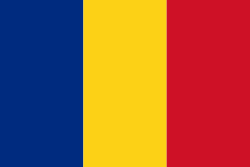 Dumitru Mitu
Dumitru Mitu
 Sead Halilović
Sead Halilović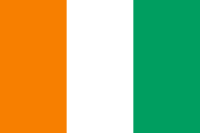 Frank-Manga Guela
Frank-Manga Guela
Coaches
|
|
|
References
External links
- Plavisalon.net - the ultimate Dinamo site (English)
- Official website (Croatian)
- NAvolej (Croatian)
- NK Dinamo Zagreb unofficial forum (Croatian)
- Zagreb's Blues (English)
- Bad Blue Boys (Croatian)
- Bad Blue Boys-Zagreb (Croatian)
- Videoblog - Fans of Dinamo
- Official Football Shirts for Dinamo Zagreb
|
Prva HNL 2008-09
|
|||||||||||||
|---|---|---|---|---|---|---|---|---|---|---|---|---|---|
|
|||||||||||||
|
Prva HNL seasons
|
|||||||||||||
|
|||||||||||||
|
UEFA Cup 2008–09
|
|||||||||||||
|
|||||||||||||
|
Founding Members of the ECA
|
|||||||||||||
|
Ajax • Anderlecht • Barcelona • Bayern Munich • Birkirkara • Chelsea • Copenhagen • Dinamo Zagreb • Juventus • Lyon • Manchester United • Milan • Olympiacos • Porto • Rangers • Real Madrid • Valencia |
|||||||||||||